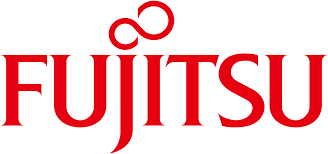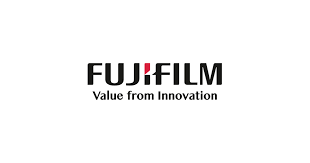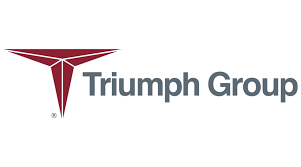Global Industrial Cybersecurity Market Size, Share & Trends Analysis Report By End-user, By Region, and Segment Forecasts, 2023 - 2030
- Report Summary
- Table of Contents
- Segmentation
- Methodology
- Download Sample
Cybersecurity deals with the practise of protecting internet-connected devices from numerous online threats. It prevents hackers from accessing networks or systems while securing data, software, and hardware. Businesses need cybersecurity to safeguard their data, cash, and intellectual property. Increased attack surfaces are a result of the widespread deployment of Industrial Internet of Things (IIoT) technologies in the industrial and critical infrastructure sectors (such as electricity utilities, oil, gas, etc.). Industrial IoT has substantial effects on industrial operating technology outside of the IT sector as well, increasing security concerns.
The Industrial Cybersecurity Market is valued at US$ 21.2 billion by 2022 and is expected to grow to US$ 45.8 billion at a CAGR of 9.8% during 2030.
Industrial Cyber Security is the area of an Industrial Automation and Control System (IACS)'s overall security that depends on the suppliers' use of the right security development lifecycle for their products, which include DCS and SCADA systems as well as their components, embedded devices and software applications. As cyberattacks increasingly target physical processes for ransom or to destroy crucial production systems, industrial security is becoming more and more important. Boards, governments, and operators of industrial organisations are more concerned as a result of attacks like those at the Oldsmar water treatment plant, a range of ransomware attacks on the supply chain of vaccines and the serious threats to the US and Ukrainian power grids and oil refineries in the Middle East.
COVID-19 Impact on Industrial Cybersecurity Market
During the COVID-19 pandemic, governments around the world placed restrictions that prompted employees to work from home. A segment of the IT security industry has been badly affected by the combat measures, such as complete lockdowns and quarantine.
Due of its impact on manufacturing activities, the COVID-19 pandemic had an effect on the industrial sector. Manufacturing is becoming smarter through technology and connected devices as advanced technologies like AI, machine learning, and IoT are being adopted more frequently. Organisations are more susceptible to DDOS and phishing assaults, data theft, ransomware attacks, and data breaches as a result of their heavy reliance on connected devices. Organisations are now concentrating on analysing tactical actions, establishing important security rules, and keeping an eye out for unusual logins in emails and active directories.
Businesses and employees are being pushed like never before to alter the way they work and communicate as a result of the COVID-19 pandemic. Businesses are being compelled to quickly digitise their corporate processes, establish flexible and remote work environments, communicate with clients online, and handle personnel management primarily through digital media. As a result, there is a chance for the cybersecurity industry to respond to the fast-growing number of cyberattacks and the growing number of companies needing cybersecurity services.
Even before the COVID-19 epidemic affected the lives across the globe, there was already a shortage of cybersecurity personnel. Approximately 500,000 cybersecurity specialists were lacking in the United States alone in 2019, and approximately two thirds of organisations reported cybersecurity employment shortages, as per ICF Whitepaper. With a growing need for cybersecurity in sectors like healthcare (including pharmaceuticals and biotech), banking, and insurance, the gap is now much bigger. Additionally, in light of the start of COVID-19, the Cybersecurity and Infrastructure Agency (CISA) has designated cybersecurity engineers, risk management analysts, and information technology professionals as important personnel. Hence, COVID -19 had a positive impact on the global industrial cybersecurity market.
Factors Driving the Industrial Cybersecurity Market
Drivers
Growing incidences and frequency of cyberattacks
Worldwide, the number of cyberattacks is increasing, with 38% more cyberattacks per week on corporate networks in 2022 than in 2021, according to research by Check Point Software Technologies Ltd. At the same time, other cyber threat patterns are emerging. When compared to 2021, global cyberattacks climbed 38% in 2022. With an average of 1168 attacks per organisation each week, the amount of cyberattacks worldwide peaked in Q4 of that year. Smaller, nimbler hacker and ransomware gangs, which attacked educational institutions transitioned to e-learning after COVID-19, used collaborative technologies used in work-from-home environments to drive up the frequency of cyberattacks.
Healthcare organisations witnessed the most increase in cyberattacks in 2022 when compared to all other industries, which contributes to the rise in worldwide cyberattacks. With 1875 weekly attacks per organisation, Africa saw the most attacks, followed by Asia Pacific with 1691 weekly attacks per organisation. When compared to 2021, the regions with the biggest increases in cyberattacks were North America (+52%), Latin America (+29%), and Europe (+26%). Also, overall cyberattacks in the United States increased by 57%, those in the United Kingdom by 77%, and those in Singapore by 26% in 2022.
Further, according to cybersecurity company SonicWall, there were 623.3 million cyberattacks worldwide in 2021, with cyberattacks in the United States increased by 98%. In particular, ransomware, encrypted threats, Internet of Things (IoT) malware, and crypto jacking—the practise of a criminal using a victim's processing capacity to earn cryptocurrency—all escalated in severity in 2021.
Also, according to 2022 study from Rockwell Automation, state-affiliated groups are responsible for over 60% of cyberattacks against the industrial sector. According to the preliminary research report's findings, unauthorised access or data disclosure occurred as a result of 40 percent of these cyberattacks. The study is consistent with earlier studies in the field that show an increase in OT/ICS security events, particularly those that target critical infrastructure like energy producers.
Restraints
Shortage of skilled professionals and lack of awareness
The cybersecurity industry is always changing one. Every day, new dangers, risks, and vulnerabilities appear. Enterprises must be protected by highly adaptable and modern cyber specialists due to the constantly changing cyber threat landscape. Therefore, it is crucial to employ qualified cybersecurity specialists. The World Economic Forum (WEF) has released research stating that there is a 3 million person global shortfall of cybersecurity professionals. Finding the appropriate fit can be difficult due to the abundance of technologies and rapidly changing fields, and the talent market is experiencing a significant demand versus supply gap. As per 2021 (ISC)3 Cybersecurity Workforce Study, number of cyber security experts must increase by 65 percent if key industrial assets are to be adequately protected from the growing number of ransomware assaults.
Also, there is a lack of awareness regarding cybersecurity among people. For a long time, people outside the information security community have used security awareness as a compliance checkbox. Because most security awareness information is poorly done and intended to focus on compliance rather than risk education, it's not surprising that a sizable portion of the population is unaware of what's going on.
The failure of employees to understand cybersecurity is a company catastrophe waiting to happen, according to a recent report. Employees are unaware of the risks they confront on a daily basis in a time of rising danger from cybercriminals. The study examined employees' cybersecurity knowledge as well as how effectively they used it. It was conducted by cybersecurity awareness company Knowbe4 in 2021. Employees from a wide range of industries, including healthcare, banking, and technology, were examined by the researchers.
As per the report, over 50% of workers don't believe it's possible that clicking on dubious links will cause malware to be installed on their phones. And to make matters worse, close to 25% of workers think that suspicious links provide little to no harm at all. The report also revealed a concerning number of workers who are ignorant of fundamental cybersecurity procedures. Additionally, despite being a frequent threat against firms, almost half of employees were unable to accurately identify a phishing effort. Despite being one of the largest dangers to many sectors, social engineering generally seems to be the least understood. Hence, it is necessary to increase employee awareness of cyber security through different training and awareness programs.
Industrial Cybersecurity Market Segmentation
The industrial cybersecurity market is categorized into segments based on component which includes product, software and services. Software has experienced a significant surge in demand due to increasing adoption of software solutions such as firewall, SCADA encryption, DDoS, virtualization security, backup & recovery, antivirus/malware, and many others. Industry leaders across the globe are concentrating on releasing and creating cutting edge industrial security software solutions for the automotive, oil & gas, energy, and other sectors. For instance, Check Point Software Technologies Ltd. recently introduced Check Point R81, which is a unified cybersecurity platform developed for industrial applications. It assists in the delivery of pre-programmed threat protection notifications, supporting IT staff in the effective management of network configurations.
By Security Type
On the basis of security type, the worldwide industrial cybersecurity market is categorized into network security, cloud application security, end-point security, internet security and other security types. The endpoint security market held the greatest market share in 2022 for industrial cybersecurity worldwide. Due to the exponential growth in endpoint device numbers and the increasing demand for endpoint security solutions to protect diverse enterprise networks, this category has a sizable market share.
However, the CAGR for growth in cloud application security is likely to be the highest throughout the projection period. This is primarily due to the growing usage of cloud computing in manufacturing sector. During the projected period, the segment for network security, end-point security, and internet security is anticipated to increase steadily. The increase in demand for reliable and safe security solutions across industries including energy, food and beverage, automotive, and others is driving the segment's growth.
By Regions
By region, the market is divided into North America, Europe, APAC, and Others. Others is further divided into Middle East and South America.
In 2022, the North American industrial cybersecurity market exhibited a size of more than US$ 7.2 Billion and is poised to reach more than US$ 16.03 Billion by 2030. Due to changing business requirements and the need to implement Industrial Internet of Things (IIoT) technology, many companies in North America are experiencing problems implementing industrial cybersecurity risk management programmes. Additionally, market expansion in North America is projected to be fuelled by increased investment by major companies to expand globally. Essential players including Rockwell Automation, Inc., CyberArk Software Ltd., Cisco System, Inc., etc. are substantially responsible for the region's expansion. Further. In North America, the market for industrial cybersecurity is anticipated to grow more swiftly due to increasing efforts by major companies in establishing their footprint internationally. For instance, in November 2020, CyberArk Software Ltd. unveiled CyberArk, which is a Cloud Entitlements Manager, an AI-based service. The system was developed to enhance cloud infrastructure security across sectors.
The Asia Pacific is expected to witness highest CAGR during the forecast period. Major businesses are concentrating their investments to embrace cloud-based security applications in nations like China, India, Taiwan, Japan, Australia, South Korea, and other ASEAN nations. Small and medium-sized enterprises and startups are extremely prevalent in manufacturing sectors of these nations and employ more than 70% of the workforce. The rapid digitalization and virtualization of company, the growing BYOD trend, and the complexity of business will all drive small and medium-sized enterprises to adopt various industrial control systems and services. Vendors in industrial cybersecurity sector who provide goods and services to customers in the manufacturing, transportation, and energy sectors may find these SMEs useful.
Furthermore, Europe is anticipated to experience significant growth during the forecast period. The increase in investments for the development of secure IT infrastructure across the automotive sectors is primarily responsible for this region's growth. For instance, UBS Group AG estimates that by 2025, European sales of electric vehicles will likely total 6.33 million units. Moreover, South America, the Middle East, and Africa are the three regions that are anticipated to experience notable growth. The increase in investments in projects across nations including Iran, Brazil, Turkey, Israel, and others is primarily responsible for the development. For instance, Iran launched a programme to build a cybersecurity force with the help of Revolutionary Guards Corps, with about $1 billion expenditure in June 2020.
Industrial Cybersecurity Market Competitive Landscape
The competitive landscape of the Industrial Cybersecurity market involves assessing the competitive landscape to understand the strengths, weaknesses, opportunities, and threats of the industry. Key industry players have recognized that the adoption of industrial cybersecurity components holds the potential for profitability. This is due to its versatile applications across various industries and its alignment with products. The growing desire among producers to optimize their production costs has spurred collaborative efforts among companies to scale up their production capacity. This strategic collaboration not only aims to increase revenue but also seeks to establish dominance in the market.
The Industrial Cybersecurity market is highly competitive, with numerous companies vying for market share. Prominent companies in the Industrial Cybersecurity Market include ABB Ltd., Bayshore Networks, Inc., Broadcom Inc., Check Point Software Technologies Ltd.,
Cisco Systems, Inc., Dell Inc., F5, Inc., Fireeye, Inc., Fortinet, Inc., Honeywell International Inc., IBM Corporation, Juniper Networks, Inc., Kaspersky Lab, Mcafee, Llc (Intel Security), Microsoft Corporation, Oracle Corporation, Palo Alto Network, Inc., Proofpoint, Inc., Rockwell Automation, Inc., RSA Security LLC, Schneider Electric Siemens AG Splunk Inc. Symantec Corporation (Nortonlifelock Inc.) Trend Micro, Inc. and others.
Recent Developments in the Industrial Cybersecurity Market
- In November 2022, Honeywell made its novel operational technology cybersecurity solutions available to clients in an effort to assist them in safeguarding the availability, reliability, and safety of their industrial control systems as well as operations. The tools, which comprise a new Advanced Monitoring and Incident Response dashboard and an enhanced Cyber App Control dashboard, are designed to provide enterprises with round-the-clock intelligent threat detection across the expanding attack surface of their industrial control systems.
- In September 2022, in order to increase the security of crucial industrial infrastructure, ABB launched ABB Ability Cyber Security Workplace, which combined ABB and outside security technologies into single, and all-encompassing digital platform. By improving the organisation and accessibility of cyber security information, operators and engineers may be able to identify issues and take corrective action more rapidly, reducing risk exposure.
- In September 2022, OPSWAT, which is a major provider of critical infrastructure protection cybersecurity solutions, unveiled OPSWAT Neuralyzer, a novel neural network cybersecurity tool that equips operational technology personnel to protect their critical environments as well as supply chain through inventory management, asset discovery, vulnerability, network visibility, and risk management. Neuralyzer offers visibility into OT networks and hazards in less than five minutes thanks to its straightforward out-of-the-box installation and user-friendly OT interface. The neural network-based machine learning technology that underlies all of these capabilities.
- In October 2020, Siemens Energy announced the launch of Managed Detection and Response (MDR), a new artificial intelligence -based industrial cybersecurity service, powered by Eos.ii, to assist SMEs in defending critical infrastructure against intrusions. This technological platform launched by MDR, use artificial intelligence and machine learning techniques to collect and model real-time energy asset intelligence. Because of this, the cybersecurity experts at Siemens Energy are capable to watch for, identify as well as stop assaults before they happen. Siemens Energy's cybersecurity specialists implement precise defence strategies in the company's cutting-edge operational technology-security operations centre (OT-SOC) to protect customers in the power generation, oil and gas, renewable energy, and transmission and distribution sectors with the help of actionable insights from MDR's technology platform.
Table of Contents
1. Executive summary
2. MARKET INTRODUCTION
2.1 MARKET SCOPE
2.2 MARKET Definitions
3. research methodology
4. market outlook
4.1 Key Trends
4.2 GUIDELINES / REGULATIONS
4.3 COVID- 19 IMPACT ON GLOBAL INDUSTRIAL CYBERSECURITY MARKET
4.4 MARKET DYNAMICS
4.4.1 Drivers
4.4.1.1 Growing incidences and frequency of cyberattacks
4.4.1.2 Emergence of disruptive digital technologies
4.4.1.3 Rapid adoption of IoT and BYOD
4.4.1.4 Rising demand for cloud based cybersecurity solutions
4.4.2 Restraints
4.4.2.1 Lack of skilled and trained professionals
4.4.2.2 Lack of awareness in developing countries
4.4.3 Opportunities
4.4.3.1 Implementation of emerging technologies such as 5G, big data, and artificial intelligence
4.4.3.2 Increasing investments to develop and launch advanced industrial cybersecurity solutions
4.4.4 Challenges
4.4.4.1 Vulnerability issues with IoT devices
4.5 PORTER’S FIVE FORCE MODEL
4.5.1 Threat of new entrants
4.5.2 Threat of substitute
4.5.3 Bargaining power of suppliers
4.5.4 Bargaining power of buyers
4.5.5 Intensity of competitive rivalry
5. GLOBAL INDUSTRIAL CYBERSECURITY MARKET, By COMPONENT, MARKET ESTIMATION AND FORECAST, 2023-2030), value (USD million)
5.1 INTRODUCTION
5.2 MARKET SHARE ANALYSIS
5.3 PRODUCT
5.4 SOFTWARE
5.5 SERVICES
6. GLOBAL INDUSTRIAL CYBERSECURITY MARKET, BY SECURITY type, MARKET ESTIMATION AND FORECAST, 2023-2030, value (USD million)
6.1 INTRODUCTION
6.2 MARKET SHARE ANALYSIS
6.3 NETWORK SECURITY
6.4 CLOUD APPLICATION SECURITY
6.5 END-POINT SECURITY
6.6 INTERNET SECURITY
6.7 OTHER SECURITY TYPES
7. GLOBAL INDUSTRIAL CYBERSECURITY MARKET, BY INDUSTRY, MARKET ESTIMATION AND FORECAST, 2023-2030, value (USD million)
7.1 INTRODUCTION
7.2 MARKET SHARE ANALYSIS
7.3 PROCESS
7.3.1 OIL AND GAS
7.3.2 CHEMICAL
7.3.3 FOOD AND BEVERAGES
7.3.4 ENERGY AND POWER
7.3.5 OTHER PROCESS INDUSTRIES
7.4 DISCRETE
7.4.1 AUTOMOTIVE
7.4.2 ELECTRONICS
7.4.3 HEAVY MANUFACTURING
7.4.4 PACKAGING
7.4.5 OTHER DISCRETE INDUSTRIES
8. GLOBAL INDUSTRIAL CYBERSECURITY MARKET, BY DEPLOYMENT MODE, MARKET ESTIMATION AND FORECAST, 2023-2030, value (USD million)
8.1 INTRODUCTION
8.2 MARKET SHARE ANALYSIS
8.3 CLOUD-BASED
8.4 ON-PREMISE
9. GLOBAL INDUSTRIAL CYBERSECURITY MARKET, REGIONAL ANALYSIS MARKET ESTIMATION AND FORECAST, 2023-2030, value (USD million)
9.1 INTRODUCTION
9.2 NORTH AMERICA INDUSTRIAL CYBERSECURITY MARKET
9.2.1 North America Industrial Cybersecurity Market, By Country
9.2.1.1 US
9.2.1.2 Canada
9.2.1.3 Mexico
9.2.2 North America Industrial Cybersecurity Market, By Component
9.2.3 North America Industrial Cybersecurity Market, By Security Type
9.2.4 North America Industrial Cybersecurity Market, By Industry
9.2.5 North America Industrial Cybersecurity Market, By Deployment Mode
9.3 EUROPE INDUSTRIAL CYBERSECURITY MARKET
9.3.1 Europe Industrial Cybersecurity Market, By Country
9.3.1.1 Germany
9.3.1.2 UK
9.3.1.3 France
9.3.1.4 Italy
9.3.1.5 Spain
9.3.1.6 Nordic
9.3.1.7 Rest of Europe
9.3.2 Europe Industrial Cybersecurity Market, By Component
9.3.3 Europe Industrial Cybersecurity Market, By Security Type
9.3.4 Europe Industrial Cybersecurity Market, By Industry
9.3.5 Europe Industrial Cybersecurity Market, By Deployment Mode
9.4 ASIA PACIFIC INDUSTRIAL CYBERSECURITY MARKET
9.4.1 Asia Pacific Industrial Cybersecurity Market, By Country
9.4.1.1 China
9.4.1.2 Japan
9.4.1.3 India
9.4.1.4 Australia
9.4.1.5 ASEAN
9.4.1.6 South Korea
9.4.1.7 Rest of Asia Pacific
9.4.2 Asia Pacific Industrial Cybersecurity Market, By Component
9.4.3 Asia Pacific Industrial Cybersecurity Market, By Security Type
9.4.4 Asia Pacific Industrial Cybersecurity Market, By Industry
9.4.5 Asia Pacific Industrial Cybersecurity Market, By Deployment Mode
9.5 MIDDLE EAST & AFRICA INDUSTRIAL CYBERSECURITY MARKET
9.5.1 Middle East & Africa Industrial Cybersecurity Market, By Country
9.5.1.1 UAE
9.5.1.2 Saudi Arabia
9.5.1.3 South Africa
9.5.1.4 Rest of Middle East & Africa
9.5.2 Middle East & Africa Industrial Cybersecurity Market, By Component
9.5.3 Middle East & Africa Industrial Cybersecurity Market, By Security Type
9.5.4 Middle East & Africa Industrial Cybersecurity Market, By Industry
9.5.5 Middle East & Africa Industrial Cybersecurity Market, By Deployment Mode
9.6 SOUTH AMERICA INDUSTRIAL CYBERSECURITY MARKET
9.6.1 South America Industrial Cybersecurity Market, By Country
9.6.1.1 Brazil
9.6.1.2 Argentina
9.6.1.3 Rest of South America
9.6.2 South America Industrial Cybersecurity Market, By Component
9.6.3 South America Industrial Cybersecurity Market, By Security Type
9.6.4 South America Industrial Cybersecurity Market, By Industry
9.6.5 South America Industrial Cybersecurity Market, By Deployment Mode
10. GLOBAL INDUSTRIAL CYBERSECURITY MARKET, COMPETITIVE Intelligence
10.1 COMPETITIVE POSITIONING
10.2 competitor benchmarking
10.3 COMPETIVE QUADRANT
10.4 market share analysis, 2022 (%)
11. GLOBAL INDUSTRIAL CYBERSECURITY MARKET, COMPANY ANALYSIS
11.1 abb ltd.
11.1.1 Company Overview
11.1.1.1 Business outlook
11.1.1.2 Headquarter
11.1.1.3 Established/Incorporated
11.1.1.4 Headcounts/ Employee strength
11.1.2 Financial Overview
11.1.2.1 Sales/revenue
11.1.2.2 R&D expenditure
11.1.2.3 Business segment sales share
11.1.2.4 Regional sales share
11.1.3 Product Offerings
11.1.4 SWOT Analysis
11.1.5 Key Developments (Expansion/New Product Development/Agreement/Mergers & Acquisitions, Partnership/Investment/Etc.)
11.3 broadcom inc.
11.4 check point software technologies ltd.
11.5 cisco systems, inc.
11.6 dell inc.
11.7 F5, INC.
11.8 fireeye, inc.
11.9 fortinet, inc.
11.10 honeywell international inc.
11.11 IBM CORPORATION
11.12 JUNIPER NETWORKS, INC.
11.13 kaspersky lab
11.14 mcafee, llc (intel security)
11.15 microsoft corporation
11.16 ORACLE CORPORATION
11.17 PALO ALTO NETWORK, INC.
11.18 proofpoint, inc.
11.19 rockwell automation, inc.
11.20 RSA SECURITY LLC
11.21 schneider electric
11.22 siemens ag
11.23 splunk inc.
11.24 symantec corporation (nortonlifelock inc.)
11.25 trend micro, inc.
11.26 OTHERS
*Financials and Details May Not be Included in Case of Privately Held Company
Global Industrial Cybersecurity Market Segmentation
Industrial Cybersecurity by Security Type: Market Size & Forecast 2023-2030
- Network Security
- Cloud Application Security
- Endpoint Security
- Internet Security
- Others
Industrial Cybersecurity by Component: Market Size & Forecast 2023-2030
- Products
- Software
- Services
Industrial Cybersecurity by Industry: Market Size & Forecast 2023-2030
- Process Industries
- Discrete Industries
- Infrastructure
Industrial Cybersecurity by Deployment Type: Market Size & Forecast 2023-2030
- On-Premise
- Cloud-Based
- Hybrid
Industrial Cybersecurity by Geography: Market Size & Forecast 2023-2030
- North America (USA, Canada, Mexico)
- Europe (Germany, UK, France, Russia, Italy, Rest of Europe)
- Asia-Pacific (China, Japan, South Korea, India, Southeast Asia, Rest of Asia-Pacific)
- South America (Brazil, Argentina, Columbia, Rest of South America)
- Middle East and Africa (Saudi Arabia, UAE, Egypt, Nigeria, South Africa, Rest of MEA)
Major Players:
- Cisco Systems, Inc.
- Schneider Electric SE
- Honeywell International Inc.
- IBM Corporation
- Siemens AG
- Rockwell Automation, Inc.
- ABB Ltd.
- McAfee, LLC
- Symantec Corporation
- Palo Alto Networks, Inc.
- Kaspersky Lab
- Check Point Software Technologies Ltd.
- Fortinet, Inc.
- Belden Inc.
- FireEye, Inc.
- Claroty Ltd.
- Waterfall Security Solutions Ltd.
- Dragos, Inc.
- CyberX (a Microsoft company)
- Nozomi Networks Inc.
- Bayshore Networks, Inc.
- Darktrace Limited
- Indegy Ltd.
- Radiflow Ltd.
- Cyberbit Ltd.
























